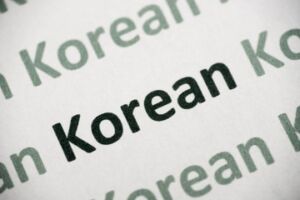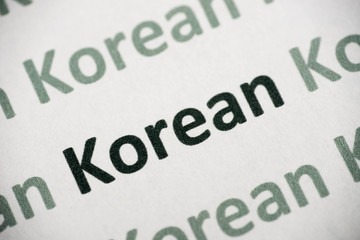Need not worry, let’s have a look at the best ways to learn Korean. The faster you execute and implement these techniques, the faster you’ll be chit-chatting in the Korean language.
- Start with mastering the Hangul:
The Korean language uses 한글 (Hangeul) or Hangul alphabet as its writing system. It is the name for the Korean Alphabet system. That means you can use either Hangul or the Korean alphabet interchangeably since they mean the same thing.
The biggest strength of 한글 (Hangul) is that it’s straightforward to be told a way to browse Korean and write Korean texts. There are several loan words within the Korean language that come back from English, like “taxi,” “bus,” “camera,” and then forth. Therefore, you may end up understanding the words written in various signs or menus simply by knowing how to read Hangul, the Korean alphabet.
To achieve reading Korean, knowing the Korean alphabet is important and fundamental. Reading Korean alphabets which are written in Roman, may give you a feel of using Korean alphabets being easier but is it sustainable. No, it’s not. The quicker you learn the Korean alphabet, the more comfortable and more effective your language learning experience will be.
Learning the Hangul is a simple and straightforward process. There is a need to memorize the alphabet characters and their associated sounds. Once the alphabet learned, then, proceed to write simple words. Make it easy and fun-filled learning, keeping practicing on, no matter what your level of Korean is. Also don’t stop writing, even after you’ve mastered the strokes and sounds. You need to keep practicing keeping your memory sharp to retain what’s learned.
Whether it be any manual or a piece of write-up or a passage or any article being written in Korean, try to pick up reading material and have a dictionary (for Korean words) with you. Underline & look up words as you go. If it’s from the single source material, you’ll most likely encounter the same words multiple times in relevant contexts. Use that to your advantage which will help you in retaining the words for long.
- Be connected with the Korean content:
To be always connected with Korean while on the journey of learning the language, having the right manuals is important. Remember to keep it handy and make sure to revise it every day. A good language method helps you learn the language progressively and remain organized. A good language method should have an approach of going from simple to complex by carefully designing the curriculum and gradually introducing new words, structures and idioms in their order of complexity. The goal is to enable you to take the time out to assimilate new content and to set up the right strong foundation for the future. Think of these lessons as building blocks thereby building a strong base for language learning. Keep the objective clear and approach content with that mindset. Study up regularly and try to keep notes for further review. One can hone grammar skills, or learn to speak Korean faster. Choose the right content based on the learning requirements.
As seen already, flashcards are a very common method while learning any other languages. Flashcards seem to help learners learn words faster and more effectively in an associated manner. Flashcards, if designed properly, tend to develop a neural connection between the meaning of a word, phonetics, and word spelling. One can make their own flashcards. Associate objects with the flashcards. You can use flashcards for the objects used in day-to-day life. Whenever using those objects will help you in recalling their words in Korean.
Movies are the multisensory resources for any language learner, which not only helps in improving your way of conversing in Korean but also helps in reading if watching movies with subtitles. It also increases your knowledge of vocabulary. Watch Korean movies once with English subtitles and in the next turn without the subtitles. It will help you in recalling words which you noted and learnt at first. There are many online resources available like VIKI or Netflix.
- Knowledge about loan words:
Words that are taken or transferred or loaned from one language to another with little to no modification or changes. This scenario is usually observed as Konglish or Korean-style English. And this way of developing familiarity between the two languages will help in learning vocabulary faster. As a beginner, one of the first goals of Korean learning is easy communication: understanding and being understood. These are 2 of the foremost difficult tasks. With loanwords, you’ll slowly break down this barrier by utilizing Korean vocabulary which you already know but are not aware of.





